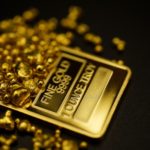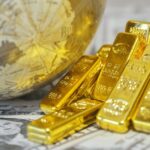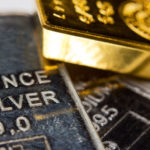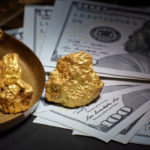Weekly Market Report 7/05/11
GOLD
This morning gold is back above the psychological $1,500.00 an ounce level on short covering and bargain buying. But, last week Gold was down $14.20, ending the week at $1,486.70 per ounce. Last Friday I was very surprised to see gold trading down as low as $1480. With a number of volatile issues temporarily behind us, the emotional run to own Gold needs new stimulus. Gold investing as a hedge to higher crude oil prices and a weaker dollar has slowed down. The elimination of the Greek debt crisis has temporarily slowed down gold demand in Europe.
U.S. Quantitative Easing II ended June 30th, and the possibility of a new Treasury Secretary coming in the fall has added to the uncertainty of gold ownership. However, with the ongoing geopolitical problems in the Middle East and Northern Africa, and extraordinary demand for Gold & Silver coming from Asia and many of the world’s central banks, as well as the debt ceiling debate still going on in Congress, we could see some bullish precious metal news very soon.
Since next year is an election year, I strongly believe that after the Federal debt ceiling is raised by August 2nd, the Federal Reserve or the U.S. Treasury will start sending out signals for the next round of Quantitative Easing. Hopefully, it will be focused on job creation and providing funds for the housing default and foreclosure problem. If the Democrats want to regain the House and to re-elect Obama, the economy and employment situation had better show sizeable improvement.
On the Republican side, I believe that Ron Paul’s candidacy for President is not a serious campaign. Congressman Paul didn’t even visit New Hampshire or Iowa on the 4th of July, like the other Republican candidates. Ron Paul declaring himself as a presidential candidate will serve two purposes. First, the funds he raises could be used for future political campaigns and second, it positions him at the Republican Convention to have input on the platform. Ron Paul really wants to see the platform have a plank which would support a U.S. Gold Standard and a few other conservative issues.
SOUND MONEY PROMOTION ACT, S.1287
The issue of a Gold Standard is gaining traction in Washington D.C. On June 28th, Utah Senator Mike Lee, South Carolina Senator Jim DeMint, and Kentucky Senator Rand Paul introduced the Sound Money Promotion Act, S.1287. This legislation would make Gold and Silver legal tender and eliminate federal capital gains taxes on Gold & Silver Coins. The proposed legislation would treat gold and silver coins as equals to regular U.S. currency in transactions. Passage of this legislation would add one more reason to my past three articles on the best way to invest in Gold and Silver.
Remember, Gold and Silver mining stocks, funds, and ETF’s are currently subject to annual 1099B reporting forms while many gold and silver investment coins are not.
As Chairman of the precious metal communities Gold & Silver Political Action Committee (G&S PAC), I will be carefully monitoring S.1287 and supporting its passage. For more information on this, or if you want to make a contribution to the G&S PAC visit www.goldandsilverpac.org. The G&S PAC currently has $250,000 in its treasury and is hoping to raise over a million dollars within the next year. These funds would enable us to endorse and financially support candidates for federal office who understand and back our issues. I feel confident that with a million dollars available to contribute to candidates, they will take the time to answer our survey and provide their opinion on issues that affect gold and silver ownership.
SILVER
Silver closed at $33.86 last Friday, down $0.77 per ounce for the week, taking direction from the gold market. The major news events this past week that effected silver were all bullish. The first precious metal exchange trading physical silver at spot prices opened in the Chinese province of Hunan with great fanfare and excellent demand. The Solar industry is now consuming 11% of the world’s silver supplies. Manufacturers of solar panels are having silver supply storages for their panels, as each panel requires 20 grams of silver. Lastly, Peru, the world’s largest producer of Silver, has reported a 19.18% decrease in its silver production.
WILL HIGHER U.S. INTEREST RATES CAUSE GOLD TO DROP?
One of the questions that is continually asked of me by gold investors is “what will happen to the gold price if interest rates start to rise?” I did not cover this issue in the 24 page Hyperinflation booklet. I will however answer this question when I update the Hyperinflation study later this year.
Let’s look at what happened with interest rates between 1977 and 1980, when gold went from $134.50 per ounce to $850 per ounce.
| Spot Gold |
Prime Interest Rate |
|
| January 1, 1977 | $134.50 | 6.25% |
| January 1, 1978 | $169.20 | 7.75% |
| January 1, 1979 | $226.00 | 11.75% |
| July 1, 1979 | $277.50 | 11.75% |
| January 1, 1980 | $512.00 | 15.25% |
| January 21, 1980 | $850.00 | 15.25% |
The gold price rose from $226 to $850 while the Prime interest rate was over 11%¸ and then continued to increase to 15.25% for over a year as the gold price tripled. This was the period of time when crude oil and gasoline prices doubled. We saw President Jimmy Carter’s “Whip inflation now” campaign. These numbers clearly show that rising interest rates are not negative for the Gold price if inflation remains an issue.
In a June 28th 2011 Wall Street Journal article by Larry Lindsey (Former Federal Reserve Governor) on the budget deficit and the effects of future interest rates, Mr. Lindsey states that the current average cost of U.S. Treasury borrowing is at 2.5%. He states that over the last two decades the average rate has been 5.7%. Mr. Lindsey feels that if the U.S. Treasury rate would go back to the two decade average of 5.7% it would add an additional $420 billion annually in 2014 and increase interest payments to $700 billion by 2020. The likelihood of our Treasury paying 15.25% on government securities as it did in 1980 is virtually impossible; the debt is just too large. We were paying interest on less than a $1 trillion national debt in 1980 and have added over $13 trillion to our national debt in the past 31 years. Today, we are paying interest on over $14 trillion in debt, and that interest payment is sizeable.
RARE COINS REPORT
With the exception of the ANA’s World Fair of Money held in August every year, the summer is normally a very quiet time for the U.S. rare coin market. Many of the major dealers, collectors, and investors go on vacation or engage in leisure activities. Speaking of the World Fair of Money (WFM), this year it will be held at the Stephens Convention Center in Rosemont, IL right outside of Chicago’s O’Hare Airport. The dates for the largest numismatic event of the year are August 16th to 20th. If you have never attended a WFM before, it is truly an experience, with more the 1,200 of the World’s best rare coin and currency dealers and exhibits from many of the world’s mints and museums.
CoinStats STATISTICAL NUMISMATIC ANALYSIS
The updated CoinStats study reports are now available for $20 Gold Saints & Liberties, Morgan and Peace Dollars, and Walking Liberty Half Dollars, graded from MS63 to MS67. I believe CoinStats is the best investment tool for rare coin investors. CoinStats is an in-depth statistical analysis of popular rare coin series that allow investors to identify the best values in certified rare coins. We are proud to offer this unique and outstanding investment tool exclusively to our clients only.
Let me explain why CoinStats is so helpful for rare coin investors. About 16 years ago, based on speaking with a number of rare coin investors who are active in the stock market, I realized that there were many similarities between identifying undervalued stocks and undervalued rare coins. I start out with the “market capitalization” of each coin in the nine most popular series of rare US silver and gold coins, in grades MS63 through MS67. The “market capitalization,” or “market cap,” of a company’s stock equals the number of shares outstanding multiplied by the price per share. In rare coins, market cap = population (defined as number of coins graded by NGC + number of coins graded by PCGS) times the price of the coin. The prices from PCGS.com, in most cases is considered to be the retail price guide, however our clients purchase price can be lower than PCGS.com in many cases.
Comparing the market cap of coins is the first step in identifying undervalued coins. CoinStats goes on to compare the decrease in population of the next grade up to the increase in price of that grade. The largest percentage decrease in population of the next grade up combined with the highest percentage increase in price of the next grade up identifies value coins. As collectors and investors are priced out of the market for the next grade up, their attention turns to these value coins, and their prices take off. While it’s not an infallible formula, CoinStats has consistently helped investors outperform even the overall market in investment-quality coins for the past 16 years.
THIS WEEK’S RECOMMENDED COMMITMENT AND DIVERSIFICATION:
Precious Metal commitment: Minimum of 35% of investible capital
Diversification: Gold 60%, Silver 30%, and Palladium 10%
Diversification includes long term numismatic investment and short term bullion products.






